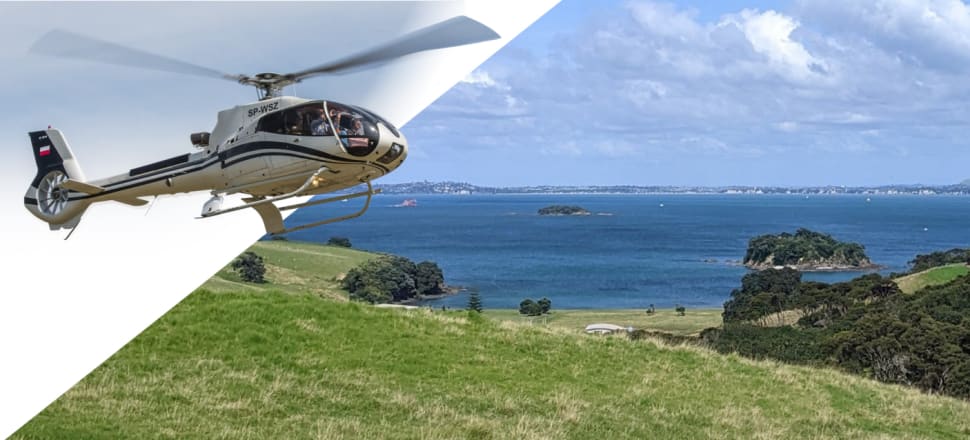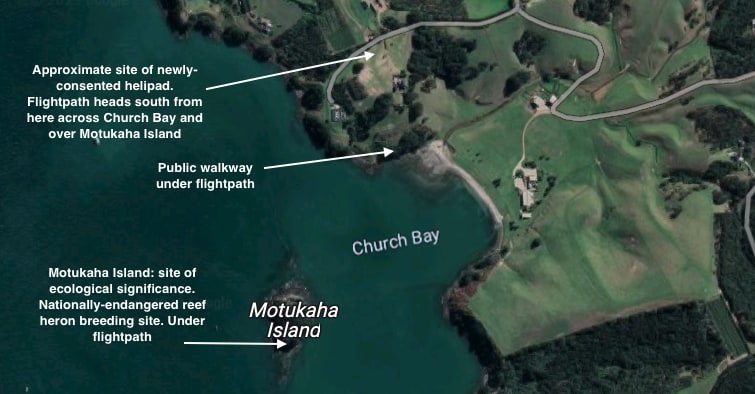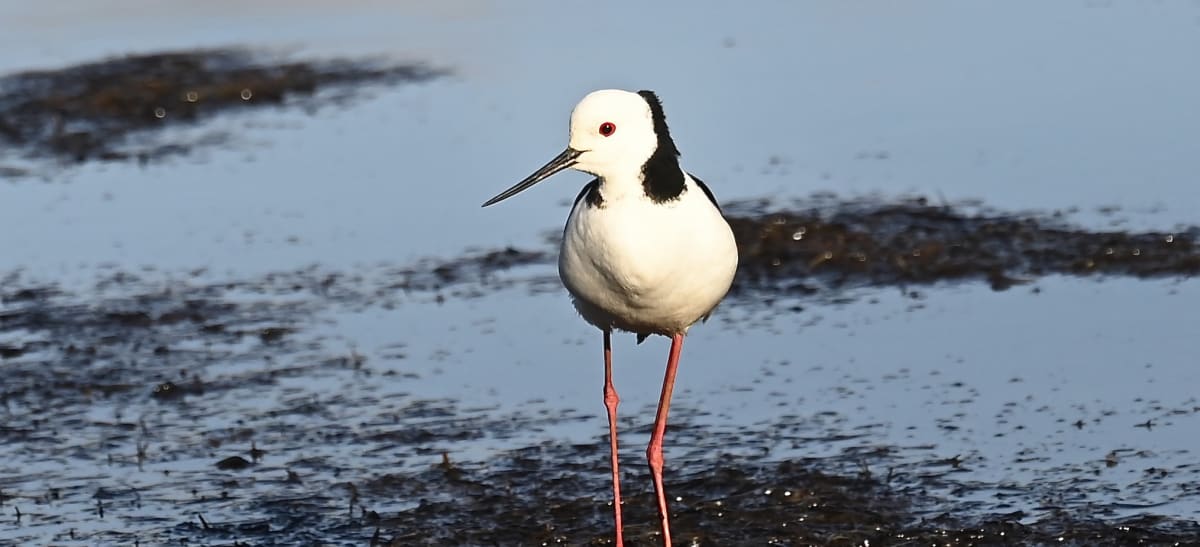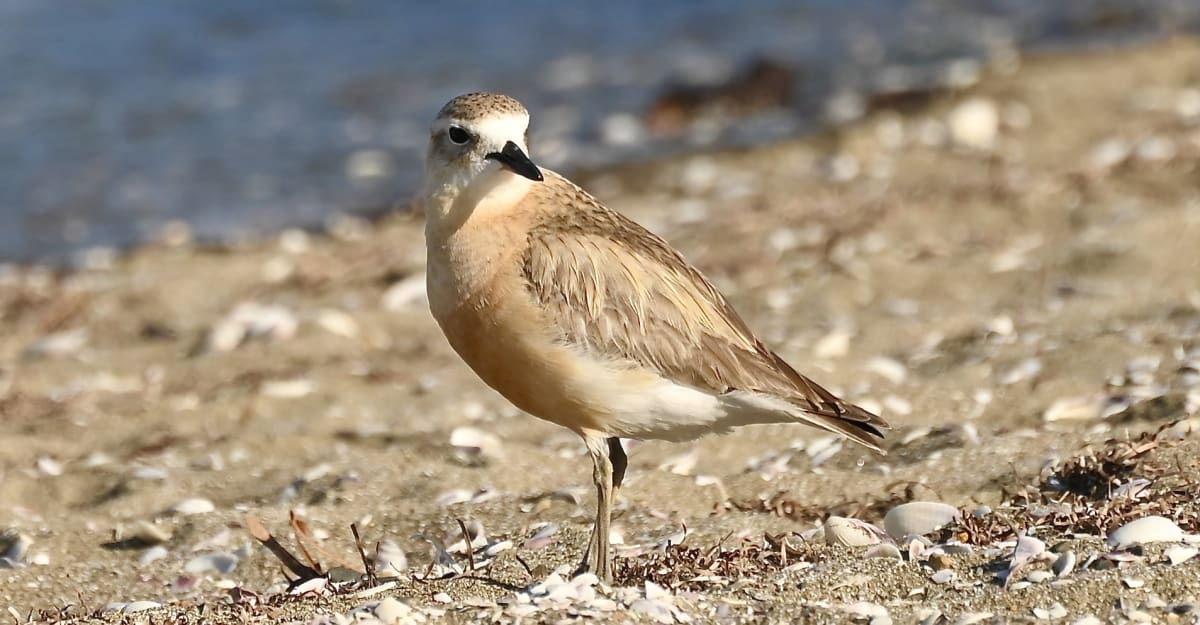
Auckland Council has consented yet another helipad on Waiheke Island. That’s more than 60 on an island less than 20km long. Kim Whitaker asks how has council got it so wrong?
A landowner in Church Bay, Waiheke Island, got some welcome news on Friday afternoon, when their helipad consent application was granted. They may have celebrated. They were probably not surprised; 13 of their immediate and nearby neighbours already have a helipad.
The authors of the 2010 New Zealand Coastal Policy Statement may have been surprised, however. The flightpath goes very low (and loud) over Motukaha Island, which is a listed site of ecological significance under the Auckland Council district plan, as well as part of a coastal area labelled as a significant ecological area, again by the council.
The island is a breeding ground for reef herons, considered nationally vulnerable to extinction, as well as for endemic native variable oystercatchers and protected pied shags.
READ MORE: * Rotors over Waiheke, or paradise drowned out * Helipad fight: 2023 will be crucial, protestors say * All Black's mansion: helicopter v dotterel
The New Zealand Coastal Policy Statement 2010 sets a high bar in protecting indigenous biological diversity in the coastal environment, requiring that all adverse activities are completely avoided around any threatened or at-risk native species.
At the same time, Auckland Council’s helicopter practice and guidance note makes it clear all resource consent applications for helipads in a coastal environment (which is most of them) need to be assessed against the coastal policy statement and must have an expert report.
“The policy sets an extremely high threshold,” the note says, “making it clear no adverse effect is acceptable, regardless of its significance.”

That expert report would need to prove there would be no adverse impacts of any kind on breeding birds in the coastal zone, including on Motukaha Island, and the coastal policy statement stresses the need for a precautionary approach “towards proposed activities whose effects on the coastal environment are uncertain, unknown, or little understood, but potentially significantly adverse”.
None of this happened in this case. No expert report was provided by the applicant and none was sought by council.
Instead, council stated in the consent decision that the helipad proposal “is considered consistent with the sustainable management purpose of Part II of the Resource Management Act and other relevant documents”.

To paraphrase, council said the application is consistent with the Coastal Policy Statement, even though the application hasn’t been assessed against that statement.
Moreover, neither the applicant nor council even identified the endangered birds and habitats, let alone considered how they could be affected.
With regard to noise, the council says levels are “reasonable within the immediate surrounds”, yet the application never states the maximum noise level at any location – neither at the site, nor at the neighbouring sites, nor at the public walkway on the property boundary, nor at Motukaha Island.
Instead, it only ever states the average noise over three days, which is very much less than the noise of an actual helicopter flight, as it includes the long periods of quiet between the flights.
Human v avian neighbours
Though the helipad applicant got permission from their immediate (human) neighbours, council is obliged to consider the avian neighbours too. The flightpath is over a site of ecological significance where endangered birds breed.
The consent of human neighbours (who aren’t directly under the flightpath) shouldn’t override a breach of the noise standard that affects those birds.
How has council got this so wrong?

First, council has not given effect to the Coastal Policy Statement by changing the Hauraki Gulf Islands District Plan rules. It was supposed to do so “as soon as practicable” after the statement was gazetted – in 2010.
Second, council has not seen fit to consider the requirements of the Coastal Policy Statement when processing consent applications, because it states the rules “capture all the relevant planning considerations” so there is “no need to go beyond these provisions and look to Part 2” of the RMA.

Quiet Sky Waiheke thinks the authors of the Coastal Policy Statement would be most surprised to learn that this is the case; when the statement was gazetted, the government said councils and consenting authorities had to take it into account.
The conditions of the Coastal Policy Statement applied from the end of November 2010. It is now the middle of March 2023. Nearly all of the more than 60 helipads on Waiheke have been granted consent during that time. Nearly all of those are coastal.
None of the consents were processed with reference to the Coastal Policy Statement.
This article was originally published on the Quiet Sky Waiheke website







